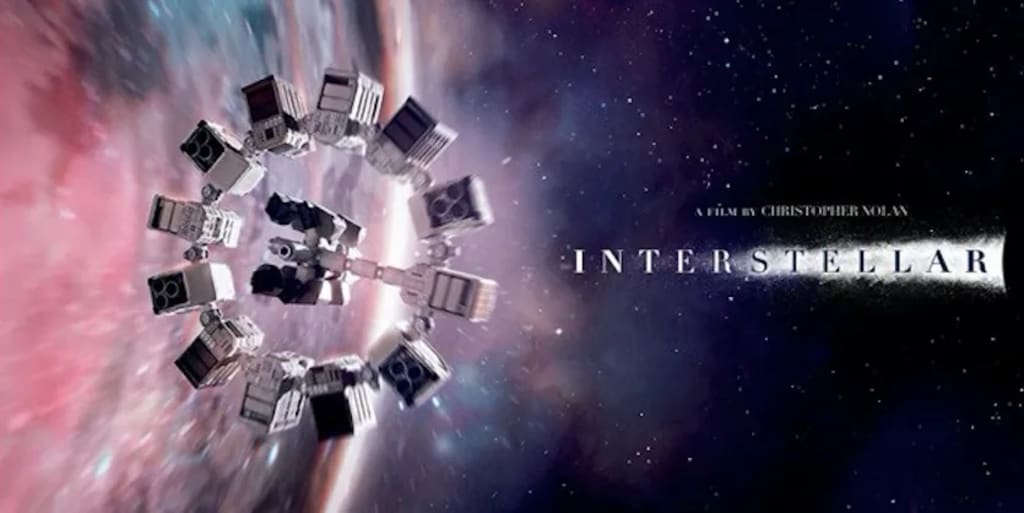Interstellar: A Retrospective
A brief look at one of Nolan's Crowning Jewels

In 2014, the movie Interstellar was released. Directed by Christopher Nolan and with a musical score written by Hans Zimmer, the film stands today as a cinematic masterpiece. From the subject matter to the characters, to the sound design, to the painstaking lengths that they went to getting the science as accurate as possible, Interstellar, in so many ways, is the movie of a generation.
Recently, Interstellar has experienced somewhat of a pop-culture resurgence with the sudden and rampant repurposing of the film’s celestial soundtrack throughout the world of social media. So much of Zimmer’s score that was designed for that movie has been used widely across videos and reels on Facebook, Instagram and Twitter in recent weeks. Even advertisers have found ways of capitalizing on the film’s awe-inspiring melodies. Though many who hear this music may not realize where it came from, its sudden rediscovery is a sound for sore ears. Additionally, it means that this is as good of a time as I’ll likely ever find for a retrospective.
The movie begins in a grittily realistic version of planet earth. Where so many films that take place in our future hone in on strange technological innovations, autocratic governments, and the general tenants of a dystopia, Interstellar neither exaggerates nor pulls any punches in its candid portrayal of our worsening climate.
The image that Interstellar provides of our future and the ways that our planet may change in coming years is stark but not overbearing. Early in the movie, dated-looking film reels contextualize our climate fallout in a way that feels urgent and honest. People speak of the food shortages and a dire, dusty world.
The solutions people propose are ambitious but not implausible. They’re lofty but not unscientific. And the debates that take place around them are hauntingly human. They’re eerily familiar because they’re the same conversations that surround our climate crisis today. They’re the same conversations that more and more scientists across our planet are beginning to have as the prospect of overcoming climate change grows increasingly unlikely. It’s for this reason that the film is not only groundbreaking, but important. It’s a movie that speaks to so much of the existential dread we’re experiencing as a species.
One of the more unique aspects of the film is the philosophical territory that it explores. But even while it examines abstruse concepts like wormholes and the dimensions beyond our own, it never departs from the hardened, realistic tone it establishes within its first few minutes. It delves into ideas that many might consider cartoonish, but it strays far enough from the tropes of the genre that it never ends up feeling like a hokey sci-fi adventure. The viewer is carried along through a wildly uncertain expedition by the skin of his teeth along with the characters.
The film is one of the most stunningly visual of the decade. While the writing is at times fast-paced, it also allows room for slow and contemplative looks out at sprawling extraterrestrial environments and into gaping voids. The special effects team goes to spectacular lengths to capture these vivid landscapes in eery levels of detail. From aqueous worlds with towering waves to desiccated tundras to the endless vacuums of deep space, the locations depicted are shockingly well-realized.
Additionally, the music that couples the explorations of these strange martian terrains brings them to life. with Zimmer’s softened, ethereal melodies, the score stands almost as a love-letter to the mystical and expansive profundity of it all. The soundtrack transitions delicately between pensive pings on a piano and grandstanding, full-spectrum orchestration. It expertly intermingles the intimate with the cosmic. With the addition of a sonorous pipe organ, it captures a level of depth that falls nothing short of divine.
Even in the film’s least musical moments, there’s a level of attention put into the sound design that can leave the viewer feeling viscerally uneasy. We hear crunches of footsteps on stark, lifeless terrain and we hear, almost feel, the clinks, rattles and hisses of the spacecraft as it soars uncertainly through alien skies.
Without giving away the most powerful parts of the film, I’ll simply need to say that it offers some of the most devastatingly soul-stirring dialogue I’ve ever witnessed. It explores the emotional implications of some of astronomy’s and physic’s strangest findings of the last few decades in ways that had scarcely been attempted in film.
Interstellar’s ability to thoughtfully delve into such complicated subject matter without ever losing sight of its emotional core represents a cinematic feat that proudly distinguishes it from so many of the movies being released today. It’s a wild frolic through time, space and soul and it’s a disconcertingly relatable look at our species as it navigates through tumultuous times.
About the Creator
Ben Ulansey
Ben is a word enthusiast who writes about everything from politics, religion, film, AI and videogames to dreams, drones, drugs, dogs, memoirs, and terrorizing Floridians with dinosaur costumes.






Comments
There are no comments for this story
Be the first to respond and start the conversation.